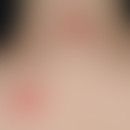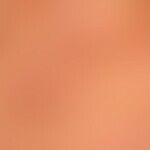Synonym(s)
HistoryThis section has been translated automatically.
Bushcake and squirrel 1911
DefinitionThis section has been translated automatically.
A net-like erythema at the site of contact caused by heat or infrared radiation (see infrared radiation below), which usually occurs during prolonged (usually habitually overheated), regularly or irregularly repeated heat stimuli. The repeated application of heat (e.g., electric kettles, seat and car heaters, but also laptops or cell phones) initially leads to the red-colored reticular livedo pattern, later to an increasing hyperpigmentation in the given livedo pattern (see hyperpigmentation, caloric also called Buschke's heat melanosis ).
You might also be interested in
EtiopathogenesisThis section has been translated automatically.
The precise cause is unclear. It is assumed to be a paralysis of the deep vascular plexus (located at the corium-subcutaneous border).
LocalizationThis section has been translated automatically.
Different, depending on the application of the temperature source (heating pads, heating belts, hot-water bottles, open fire, seat heating in cars, infrared lamps)
ClinicThis section has been translated automatically.
Net-like erythema detectable at the heat contact points (no increase in consistency on palpation), each of which forms self-contained circular formations. In the case of long-term damage, brown discolouration increasingly mixes with the red colour. As a late stage only reticulated hyperpigmentations are found.
HistologyThis section has been translated automatically.
Dilated capillaries and deposits of melanotic or hemosiderotic pigments are found under largely normal or slightly to markedly atrophic surface epithelium. Little or completely absent inflammatory symptoms.
Differential diagnosisThis section has been translated automatically.
Complication(s)(associated diseasesThis section has been translated automatically.
TherapyThis section has been translated automatically.
Note(s)This section has been translated automatically.
LiteratureThis section has been translated automatically.
- Beneke J et al (2014) Erythema ab igne in a patient with bulimia nervosa. Nude Dermatol 40:347-349
- Bücker H (1961) On the erythema effect of optical radiation. UV erythema, heat erythema. Radiotherapy 115: 136-143
Disclaimer
Please ask your physician for a reliable diagnosis. This website is only meant as a reference.
















